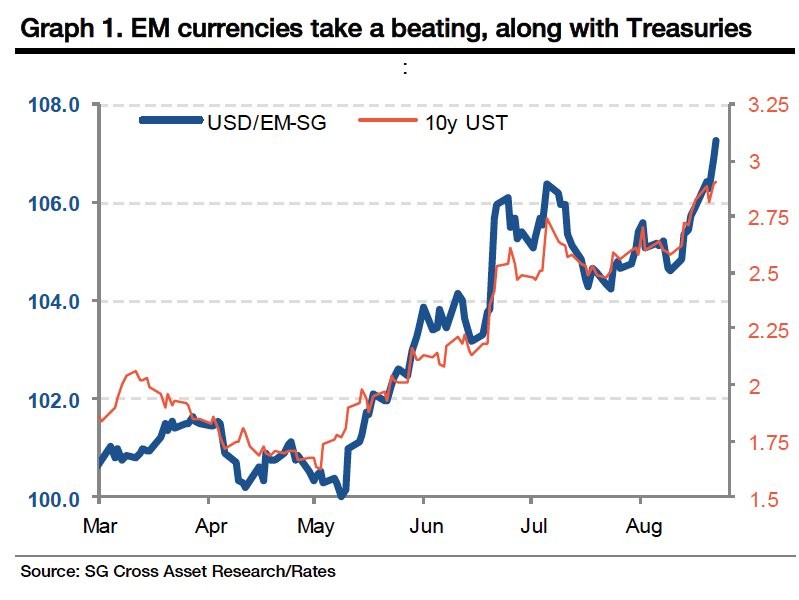Emerging Market Debt Has Surged Since The Start Of The Financial Crisis Business Insider
Post on: 24 Июль, 2015 No Comment

We hear a great deal about the credit binge in advanced economies that helped lay the foundation for the 2008 financial crisis and is also widely blamed for holding back the pace of the recovery. Well, while the West has been unwinding some of this excess borrowing in recent years, emerging markets have been seeing their own credit boom.
And it’s a huge risk — particularly in China, where growth has normally pushed along the economies of several other countries.
Growth is slowing in China and its debt overhang is growing as a result. That’s a problem because countries ought to be able to grow their way out of debt. But that era may be coming to an end. And now China has a developing real estate crash of its own.
Here are the figures as provided by J.P. Morgan. (Note Hong Kong in particular):
JP Morgan
As the table suggests, China and Hong Kong are the chief countries that have seen corporate and household debt surging as a percent of GDP. Since 2008, they have seen private sector debt-to-GDP increase by a staggering 78.2% and 105.2%, respectively. This while the global economy has been held back by sluggish growth in developed markets, which have struggled to bounce back from the crisis in the way that many economists had expected.
In the 16th Geneva Report on the World Economy released last year, the authors demonstrate that contrary to mainstream discussion about a great deleveraging (where countries seek to pay down their debt levels) globally debt has continued to rise repeatedly hitting new record highs since the onset of the crisis.
Geneva Report
With global growth increasingly reliant on the strength of emerging market economies, the sustainability of this credit boom is now under the spotlight. The concern is that with interest rates still around zero across the US, the UK and Europe and debt-to-GDP still high relative to historical norms another economic downturn could prove difficult to deal with.
Worries are increasingly focused on China, which is seeing growth starting to slow after decades of delivering double-digit annual growth. The country is due to release its economic statistics for 2014 on Tuesday morning and has been tipped to miss the government’s target for growth (7.5%) for the first time since 1998.
Although the miss is likely to be modest, more attention than usual is likely to be paid to the composition of that growth and in particular the health of the Chinese property market. Since the late 1990s, investment in China’s real estate sector has been outpacing the country’s impressive GDP growth, rising from around 4% of GDP in 1998 to around 14% of GDP by 2012.
Barclays
However, chronic over-investment in the property market for more than a decade has left a huge overhang of stock leading to a sharp downturn in the sector. Sales fell by 10.8% over the first nine months of 2014, according to the country’s National Bureau of Statistics.
This has led to new investment in property — a good guide for the market’s expectation of its future growth potential — falling sharply. A weakening property market could drag down China’s growth and pose significant risk to local government balance sheets in the country, which rely heavily on land sales to developers for revenues.
As local governments were prohibited from borrowing themselves they created off-balance-sheet companies known as Local Government Financing Vehicles (LGFVs) that would then borrow from banks, trust companies, or the bond market. Much of this borrowing was guaranteed against land sales and b y the end of 2010, the debt held by these off-balance sheet companies amounted to RMB 4.97 trillion ($812 billion), according to IMF estimates.

So what’s happening now?
The value of land sales is falling off a cliff:
Deutsche Bank
The problems are likely to weigh on Chinese growth and put pressure on the government to bail out local authorities. Deutsche Bank forecasts that GDP growth in China will fall from 7.3% in 2014, to 7% this year and 6.7% in 2016. This would mark a significant fall in trend growth for the country.
Slower growth is likely to put pressure on countries that do a lot of business with China and have seen corporate and household borrowing increase sharply in recent years as expected revenues fail to materialise — including a lot of emerging markets listed in the table above. Even more worryingly, hopes that China would rebalance its economy towards domestic demand and help provide a much needed boost to exporters elsewhere is also looking to be a much slower process than many hoped.
Although figures out on Tuesday are expected to show the Chinese economy has become relatively less reliant on investment and manufacturing and more reliant on consumer services, this will likely be due to sharper falls in the former rather than growth in the latter. Indeed they are expected to show a moderate slowdown in retail spending.
This, to misquote a Jedi master, is not the rebalancing you are looking for.
That said, 6.7% growth is not a disaster and the Chinese government has a lot of room to support ailing sectors of its economy. But the vulnerabilities of the system to a shock is rising due to the sharp increase of borrowing in emerging markets and any hopes of a fast and smooth transition of the global economy towards sustainable drivers of growth are being swiftly dashed.














